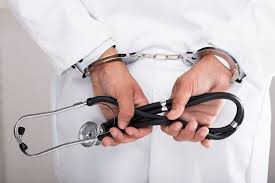You may have encountered professional negligence and malpractice, especially if you have filed a lawsuit against medical professionals. While these terms are often used interchangeably, they often refer to the same concept.
Professional negligence and malpractice both refer to the breach of duty by professionals. It often implies that a person who was paid or was in agreement to deliver certain services failed to honor the deal. Therefore, when filing a lawsuit against a professional, it is imperative to know the guidelines. Lawsuits against professionals are not handled the same way as lawsuits against neighbors or other individuals who were involved in an accident together.
Not every occupation can be classified as malpractice when filing a lawsuit, either. When suing other occupations not listed in the common law, malpractice is not included in the lawsuit. Consequently, when filing a lawsuit against these professions, the claim will most likely be a breach of contract, not professional negligence.
Examples of Professional Negligence
Negligence can be classified into nonfeasance, misfeasance, and malfeasance. Malfeasance is described as wrongdoing by a public United States official. Examples of malfeasance include tampering with evidence or using your position to intimidate others.
Misfeasance, on the other hand, involves insufficiently completing a task. This may be done by contractors who do a shady job on structures that eventually injure individuals.
Nonfeasance is the failure to complete or do a task that one is required to do. In this situation, a professional often neglects their duty—for example, a lawyer who fails to file a lawsuit for a client when they should have.
Criminal Negligence vs. Civil Negligence
Criminal negligence refers to the actions or lack of actions that end up endangering human life. Civil negligence, also known as due negligence, is when a person fails to take action of ordinary care.
In terms of punishments, criminal negligence often results in fines, while civil negligence may involve compensation for damaged property or lost wages.
How to Make a Successful Negligence Claim
As mentioned, negligence refers to a breach of duty by a professional. Therefore, to successfully receive compensation for any physical or mental damage caused by negligence, you must first prove the professional’s duty.
You then have to provide evidence for a breach of duty. This includes showing how an action or lack thereof led to the perceived consequences. It is vital to demonstrate how a duty was breached to guarantee successful claims.
You should then demonstrate how the breach of duty led to damages. Finally, you should be able to show the extent of the damages. This could be in the form of property damage or hospital bills, or emotional and physical suffering.
Due to the complexity and difficulty of proving negligence and malpractice in these types of cases, it is beneficial to hire a malpractice attorney before you begin the process of filing a claim, as they can guide you through the legal process..

